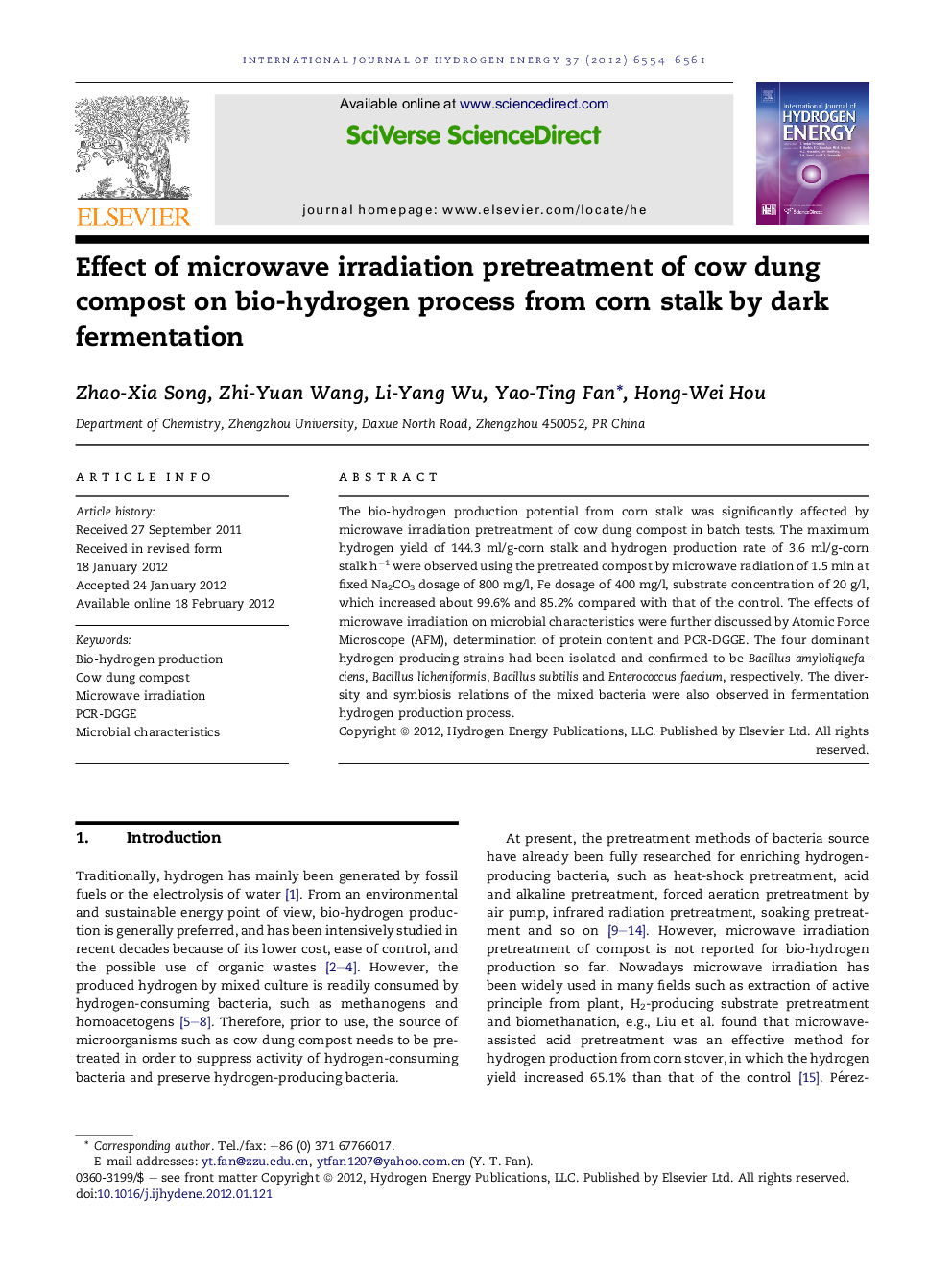| Article ID | Journal | Published Year | Pages | File Type |
|---|---|---|---|---|
| 1276595 | International Journal of Hydrogen Energy | 2012 | 8 Pages |
The bio-hydrogen production potential from corn stalk was significantly affected by microwave irradiation pretreatment of cow dung compost in batch tests. The maximum hydrogen yield of 144.3 ml/g-corn stalk and hydrogen production rate of 3.6 ml/g-corn stalk h−1 were observed using the pretreated compost by microwave radiation of 1.5 min at fixed Na2CO3 dosage of 800 mg/l, Fe dosage of 400 mg/l, substrate concentration of 20 g/l, which increased about 99.6% and 85.2% compared with that of the control. The effects of microwave irradiation on microbial characteristics were further discussed by Atomic Force Microscope (AFM), determination of protein content and PCR-DGGE. The four dominant hydrogen-producing strains had been isolated and confirmed to be Bacillus amyloliquefaciens, Bacillus licheniformis, Bacillus subtilis and Enterococcus faecium, respectively. The diversity and symbiosis relations of the mixed bacteria were also observed in fermentation hydrogen production process.
► The microwave irradiation of compost was an effective strategy for raising bio-H2 yield. ► The high H2 yield of 144.3 ml/g-corn stalk and R of 3.6 ml/g h−1 occurred in the batch test. ► The addition level of Fe and Na2CO3 also effected remarkably the H2 yield of substrate. ► The mechanism on microwave irradiation of compost was studied by AFM and PCR-DGGE.
